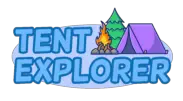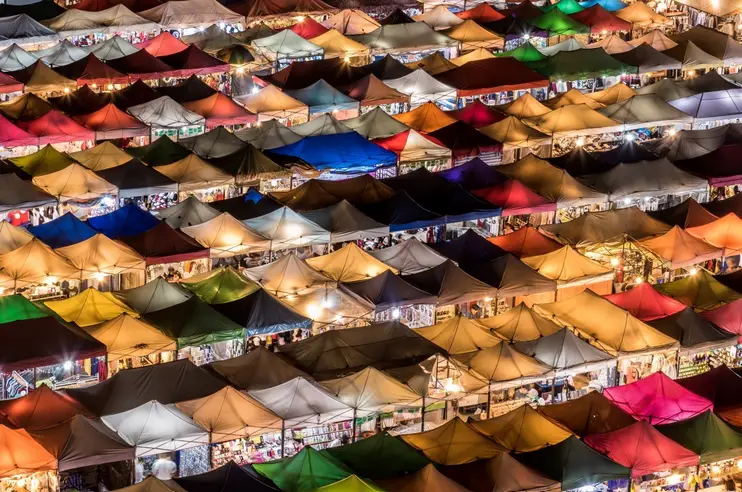This blog post may contain affiliate links. As an Amazon Associate I earn from qualifying purchases.
When I’m shopping around for a new tent, you might be surprised to learn that the colour is one of the most important factors I take into consideration. The colour of the tent makes more of a difference than you might think. Visibility, safety, and temperature are all effected by the colour.
In this blog, I want to go over some of the ways that your tent’s colour can affect your camping experience and hopefully give you some things to think about the next time you are shopping for a tent.
Factors I Consider When Choosing a Tent Color
There are a few different things I think about when I’m choosing which color tent I want. The decision is actually a lot more complex than “what is my favorite color”
Environment and Location
Where I’m planning to go camping is a major factor is determining which tent I need, and the colour is part of that decision.
- In forested areas, green or brown tents blend in with the surroundings, making me less visible to wildlife and other campers.
– If I’m camping in a desert, a sand-colored or earth-toned tent will help it blend into the arid landscape.
– Snowy areas call for white or silver tents to reflect sunlight and maintain a comfortable temperature inside.
Visibility and Safety
Color affects visibility which can have an impact on safety when camping. For example, I like to do some nature photography, and in those cases I want to blend in with my environment as much as possible. However, in emergency situations, visibility can be a matter of life and death, so if I’m camping in the snow, I will use a brightly colored yellow or orange tent.
Temperature Regulation
The color of the outside of my tent can drastically change the temperature regulation inside. Choosing the right color tent for your trip can make the experience a lot more comfortable and help you maintain a pleasant temperature.
– My dark-colored tents absorb more sunlight and can become hot during the day, making them uncomfortable in warm climates. I tend to only use dark color tents if I’m camping somewhere cold. However, a dark tent is not in itself warming, it can only help retain heat.
– Light-colored tents reflect sunlight and stay cooler. I use these if I’m camping in the desert.
– Choosing the right tent color can help maintain a comfortable environment in places with extreme temperature fluctuations.
Popular Tent Colors and Their Pros and Cons
Almost every color of tent has something going for it. It’s about finding the right one for your particular camping trip.
Earth Tones (Green, Brown, Gray)
These colors blend in nicely with natural surroundings like forests and grass. I use these when I do wildlife photography and birdwatching as I’m less likely to be detected by the animal’s I’m trying to catch a glimpse of.
However, these colors can be hard to see from a distance so if I went missing a rescue helicopter might not be able to see me. This is why I only use earth tone tents on short camping trips where there is little risk of getting lost/injured.
Earth tones can also get hot in direct sunlight. So, I try to camp in a shaded area if I am using an earth-toned tent.
Bright Colors (Orange, Yellow, Red)
These colors are highly visible, which makes them great for safety. It’s easy to see where your tent is from a distance and can be easily spotted by a rescue helicopter if the worst should ever happen.
The visibility also makes these tents a good option for music festivals or large campsites. If you’re stumbling back to your campsite after a few drinks, it’s much easier to spot a bright yellow tent among a crowd than a tan colored one.
White or Silver Tents
I have a reflective, silver tent which I use for camping in hot climates. It reflects light (and thus also heat) and helps me stay cool. White or silver tents are most useful for desert camping.
Camouflage Tents
Camouflage tents offer the most privacy. Obviously, camouflage is a design rather than a color. You can find white and black camouflage for snow camping, green and brown for forest camping and so on.
However, you are even less likely to be visible to rescue crews than you would be in a solid-color tent.
Personal Preferences and Camping Goals
As you can see from the list above, the choice of which tent color to buy isn’t a simple one. Ther most important thing to take note of is what your camping goals are. You don’t want to try nature photography sitting in a bright orange tent in the forest (you’ll scare away all the deer) and equally it would be very foolhardy to go camping in the snowy mountains in a white tent.
Personal preference also has an impact on your choice. Sometimes there is no “goal” to camping other than to get away from the city for a few days. So, if you’re not camping anywhere dangerous and you don’t plan on doing any wildlife photography then picking a color that you like should influence your decision.
Maybe it’s just OCD but I also find that matching my tent color with my camping gear and the overall camping experience can enhance the visual appeal of my campsite and create a more cohesive and enjoyable atmosphere.
Tips for Maintaining My Tent’s Color and Appearance
Once I’ve chosen the perfect tent color, it’s essential to keep it looking vibrant and clean. Here are the two most important tips:
– Regular Cleaning:
I clean my tent after each camping trip to remove dirt and stains, following the manufacturer’s instructions.
– Proper Storage:
I store my tent in a dry, cool place to prevent mold and mildew, avoiding direct sunlight.
Final Thoughts – What Is The Best Tent Color?
There’s no one-size-fits-all answer to the question of what color tent is best. Your tent color should be chosen based on a combination of factors, including your camping environment, safety concerns, temperature preferences, and the goal of your camping trip.
The next time you’re shopping for a tent, carefully consider the factors discussed in this guide. Selecting the right tent color can greatly enhance your camping experience, ensuring that you stay safe, comfortable, and happy in the great outdoors. Happy camping!
FAQs
Why does the color of a tent matter when camping?
The color of a tent affects various aspects of camping, including visibility, safety, and temperature regulation. Different colors blend into specific environments or provide higher visibility, impacting everything from comfort to safety in emergency situations.
Which tent color is best for hot climates?
Light-colored or reflective tents (such as white or silver) are ideal for hot climates as they reflect sunlight, helping keep the interior cooler. This is especially useful for desert camping or other areas with intense sun exposure.
Is a camouflage tent a good choice for camping?
Camouflage tents offer the most privacy by blending into natural surroundings, making them great for wildlife photography or secluded camping. However, they are harder to spot in emergencies, so they’re best for trips where you’re close to help and won’t need immediate assistance.
How can I keep my tent looking new after multiple camping trips?
Regular cleaning and proper storage are essential for maintaining your tent’s appearance. Clean your tent according to the manufacturer’s instructions after each trip, and store it in a dry, cool place to prevent mold, mildew, and fading from direct sunlight.


